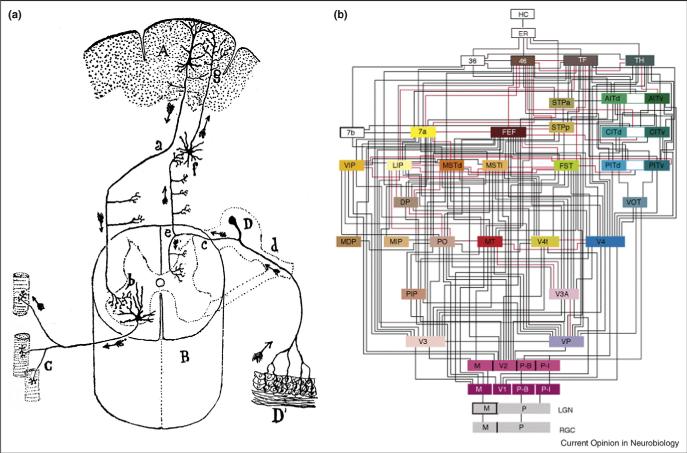Figure 1.
Scaffolds on which a connectome can be built. (a) A schematic wiring diagram. The best known are Cajal's. An example is his diagram showing the flow of information from peripheral sensory receptors to the spinal cord and brain, then back to motoneurons and muscles. He used arrows to `indicate the direction of descending motor impulses and ascending sensory impressions'. This wiring diagram was pieced together from observations on multiple samples and the direction of current flow was inferred from the structure [35]. (b) A projectome. A well-known example is Van Essen and Felleman's summary of connections among cortical areas associated with vision and some other modalities. Their diagram was compiled from results of tracing and physiological studies by several groups [25].

